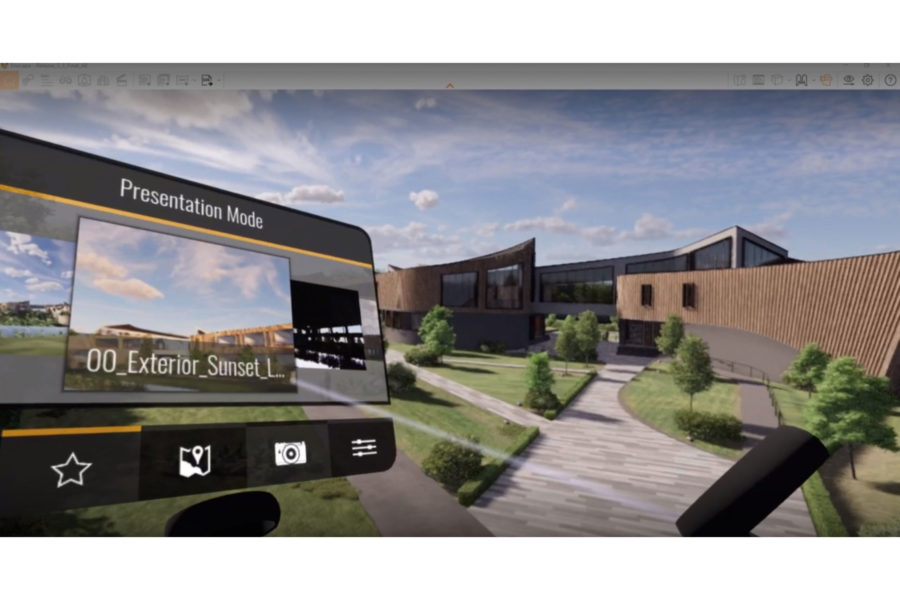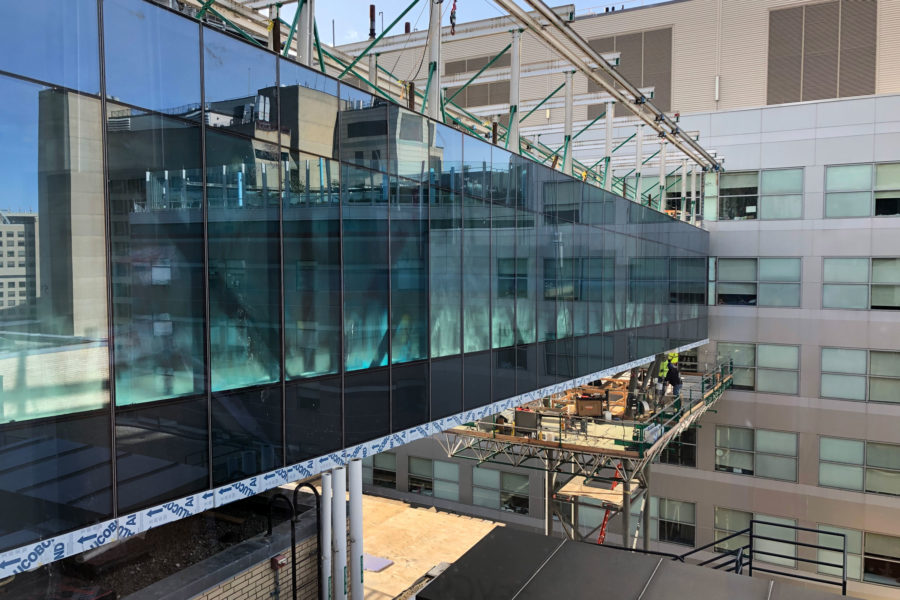Story at a glance:
- Innovative solutions invite construction teams across companies to get on the same page from the beginning.
- Real-time visualization gives architects the ability to see their projects come to life on-screen first.
- Technology can alert teams to problems they otherwise may not have noticed for weeks or months down the road.
Even in times of pandemic and uncertainty, construction continues to be big business. In 2021, new constructions in the US were valued at almost $1.6 trillion, and data shows it’s forecast to reach over $2 trillion in 2025. Construction spending has been growing steadily over the last couple of years, and residential building construction spending was expected to follow a similar growth trend over the coming years, as well as non-residential construction, according to the data.
With all of this construction comes all of the tools—and that includes the latest construction technology. How are some of today’s best buildings built? The experts at Skanska have said data consolidation is critical when it comes to making the best decisions for sustainability in construction. Innovative tech can minimize impact from everything from traffic jams and utility disruption to noise and light pollution.
When the Covid-19 pandemic hit, Skanska—one of the world’s leading construction and project development companies—was already ahead of the game, as they had already been using virtual planning and meeting tools somewhat, as well as other innovative data technology.
“We develop a tremendous amount of data in our industry. We collect it, clean it, and aggregate it to make it available to our planners and operators to draw insights from and make better decisions,” said Will Senner, vice president of preconstruction at Skanska, in a previous interview with gb&d.
“With so much information, you need to have all the data at your fingertips all the time,” Skanska’s Paul Pedini, senior vice president for Skanska Civil in New England, told us. “A field manager can use an iPad and access project controls and revenue in the field. Everything is connected. Actions are sent to the right people immediately so they can spend their time managing the project like they are supposed to be doing.”
These are just a few of the construction technology tools available today to enhance construction and design.
Real-Time Visualization

Image courtesy of Enscape
Architects and developers are increasingly leaning on tech to bring sustainable urban developments to life all over the world. Intelligent City is just one example. The technology-enabled housing company in Vancouver created a platform-based approach to scaling urban development using a technology platform they call Platforms for Life. “Platforms for Life can design and build sustainable mid-to-high-rise mixed-use urban housing that fosters community, provides commercial amenities, and delivers affordable housing all while using a structural system based on carbon sequestering mass-timber construction,” said Roderick Bates, head of integrated practice at Enscape, in a previous article for gb&dPRO. Enscape offers real-time rendering and virtual reality to bring any visual exploration directly into modeling tools so teams can focus on creating, designing, and building.
Bates said Enscape is the perfect complement to Intelligent City’s automated and efficient workflow. Platforms for Life allows a project to go from conception to construction within six to 10 months. “Adding architectural visualization to a design workflow might seem like an added step, but the renderings can be produced in real time, leveraging the data that can already be found in the design model,” he said. The result, beyond using the visualizations to bring a shared understanding of the design to all the project stakeholders, includes additional benefits, like informed decision-making, enhanced client confidence, and better cost control.
Benefitting from the Cloud

Various cloud solutions are designed for the AEC industry, from accounting and project management solutions to project collaboration tools. Photo courtesy of Sage
Accounting and business management software company Sage says cloud technology offers many benefits to all types of business in building and design, as it bridges the current gaps many in the industry face.
“The cloud provides high-performing and reliable technology solutions,” said Dustin Stephens in a previous article for gb&dPRO. “The remote data centers that support the cloud have scalable infrastructure and are connected by high-speed networks. Hyper fast network connectivity is making cloud performance comparable to or even better than our traditional in-house networks. Cloud options can also provide peace of mind in proven disaster recovery protocols, helping you keep your mission critical solutions up and running whenever you need them.”
He said there’s more than one cloud option, too, so you can get exactly what you need—whether that’s a self-hosted private cloud, third-party hosting, Software as a Service (SaaS)/Native Cloud, or simpler add-ons and mobile apps to get companies started. He spells out those options and more here.
Financial Software

Photo courtesy of ClientPay
Architects can increase profitability when they lean on financial and project software that helps them streamline services. ClientPay is a simple, web-based solution designed specifically for architecture, engineering, and construction professionals.
“Your business’ overhead will often eat into your profits if not kept in check, so managing overhead is an important skill to master,” John Lehman previously told gb&dPRO. “The first step to achieve this is understanding your business’ overhead rate (i.e. your overhead costs divided by the costs of your labor on projects).”
ClientPay helps architects work together across departments to reach a common goal and mutually benefit, from understanding overhead to creating a profit plan and eliminating silos.
Construction Management Software

The Hale Family Building is an 11-story, state-ofthe-art facility that is part of Boston Children’s Hospital. Procore was used in the construction. Photo courtesy of Suffolk
“In most corporations, workflows happen within the walls of that business, but in construction, workflows jump from company to company,” said Tooey Courtemanche, CEO of Procore, in a previous article for gb&d. “All of these complex workflows start in our project management tool. Everyone can go there to see what they need to do, what they need to bring, what is happening that day, they can raise concerns or issues about the job, and turn to other tools that support that core product.”
The web-based, built in the cloud, construction management software can be used by all key players of a project—including owners, managers, general contractors, and specialty contractors. Procore has many products available through its customizable construction management platform. The products provide solutions for managing pre-construction bids and qualifications, workflows, schedules, quality, safety, design coordination, 3D models, productivity, financials, analytics, and more.
Procore’s platform provides checklists and protocols, specific to each project, to be followed on the jobsite so every worker is as safe as possible. “Often people don’t know there is a problem until it is too late. When you have everyone collaborating on the same platform, if someone sees something that is not in compliance they can post it and get it rectified,” Courtemanche said.




